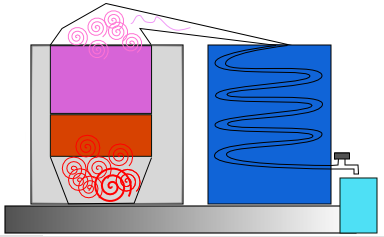anthonyyy said:
If there is wax or oil in plant matter you need to dissolve it in an organic solvent (something like petroleum) and then filter. Let the solvent evaporate and collect the residue. Bob's yer uncle and Fanny is yer aunt.
You can get special books and kit from some aromatherapy places for making your own essential oils, although I expect you can get similar results without buying the posh kit.
Here's a reasonably good guide I just found:
http://www.essentialoils.co.za/extraction-methods.htm
In the garden shed method you can use room temperature Acetone or Isopropanol, available from
fibreglass shops and
cleaning supplies respectively.
Note: The colder the solvent, the less waxes will dissolve, but if you heat it you'll burn the house down. You could warm the leaf matter through before soaking I guess...
Some substances are more soluble in certain solvents so it really depends on what you want to extract and how you want to use it.
Here's a rough guide to the Garden Shed method:
When with all solvents, keep away from sparks, douse any naked flames and perform in a well ventilated area!
1) Dry and powder your chosen plant.
2) Take all of the powder and put it in a jar that can be sealed, pour in 99% Isopropanol or acetone, close and shake for a several minutes. Let the particles settle.
3) Decant the solvent into another container and save for later
4) Repeat step 2 twice more, each time decanting the liquid into your second container. Don't use too much because you eventually want this solvent to evaporate and you don't want to wait forever!
5) Wash the now extracted sediment through with solvent and again decant the liquid twice to ensure you get all the dissolved waxes and oils.
6) Pour all your decanted liquid into a shallow container. Leave for 12 hours to allow the tannins and other particles to settle out. Decant, discard the sediment, and repeat. There could be a surprising amount so be prepared to wait.
7) Decant the now clear liquid into another shallow dish and allow the isopropanol to completely evaporate. You should get a dark waxy residue which you can use as-is or you can refine further. For instance you could dissolve the lipids and waxes out from some of the other organic compounds using naptha (lighter fluid): Wash in naptha, decant and evaporate again, then re-dissolve in another suitable solvent or again, use as-is. The sediment left after the naptha wash can be useful too depending on the plant - for instance I think you might have quite a concentration of Salicin (spelling?) left if you did it with willow, but I'm no chemist so don't take my word for it.
You could then chill the solvent which might persuade some of the less soluble waxes to solidify, and they can be isolated by filtration, but it's not so efficient.
Any more accurate extraction of certain fractions of the oils would probably require distillation which is pretty dangerous - not really bushcraft either so I'll leave it out and you can look that up on t'internet.
Does any of that ring any bells from old chemistry lessons?
Good luck!
Neil




